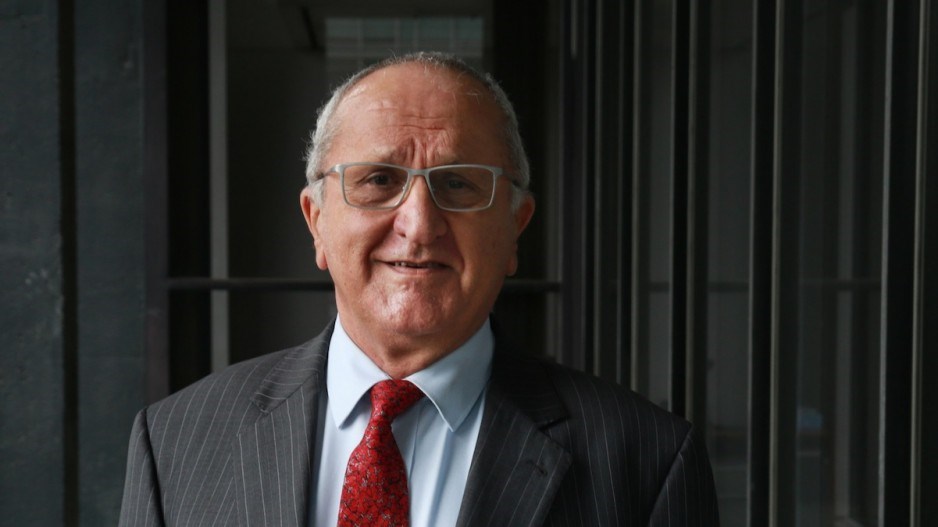The trade deal that Canadian, American and Mexican officials agreed to late last year has an 80% chance of being ratified by the three countries’ governments, Mexican trade negotiator Jesus Seade told Business in Vancouver May 28, in a one-on-one interview at the Mexican consulate during his first visit to Vancouver.
Seade’s projection comes a day after Canadian Foreign Minister Chrystia Freeland told a media scrum that she was “confident” that the Canadian government would be able to pass the trade pact before the House of Commons goes on summer break.
In order for the agreement to take effect, all three national governments must pass the treaty that is known as the Canada-U.S.-Mexico Agreement (CUSMA) in Canada, and the U.S.-Mexico-Canada Agreement (USMCA) in the U.S.
“I would put my money into it being ratified,” Seade told BIV.
Mexican president Andrés Manuel López Obrador appointed Seade to be his representative and Mexico’s chief negotiator of the revised agreement. Officially he is the undersecretary for North America at Mexico's Ministry of Foreign Affairs.
Seade believes that ratification in Canada and Mexico is largely a given, and that any resistance would come from those in the U.S. Congress.
Democrats in the U.S. House of Representatives have demanded changes to the pact to make it easier to enforce labour laws and working conditions.
He agrees with the Democrats that the new trade agreement lacks powerful enforcement provisions, and he sees that reality as a consequence of there not being any supranational body that oversees Canada, the U.S. and Mexico.
Enforcement at the World Trade Organization, in contrast, is easier because when two countries in that body have a trade dispute, and they cannot agree on whom to invite to be on a three-person independent panel, the WTO’s director general will step in and appoint the independent judges, he said, adding that the European Union has a similar supranational body that can help in trade disputes between member countries.
So while he believes that enforcement should be stronger, “we couldn’t repair that,” he said. “It was something we wanted to repair.”
How is CUSMA / USMCA different from NAFTA?
For Canadians, a major way that the new trade pact differs from NAFTA is that more U.S. dairy and poultry products will be able to enter the country tariff free.
Seade, however, sees the new pact as being different from the current NAFTA in two main ways.
First, manufacturers in all three countries must procure a greater percentage of component parts from countries that are within the agreement than they were required to do previously.
Exact percentages vary by sector, but Seade noted that in the contentious vehicle-manufacturing sector, for example, companies will in future only be able to source 25% of component parts from outside North America. That compares with the current threshold of 37.5%.
The new rule makes the new agreement more of a free trade agreement than the previous one, he explained.
The second major way that the new agreement differs from NAFTA, Seade said, is that it has regulations that butt into areas beyond trade.
“The trade rules become more intrusive into related areas, but not exactly trade – areas that you would have seen 20 years ago as being internal business of the country,” he said. “Now, it is a matter of negotiation.”
Trade agreements could be expected to have sections outlining anti-dumping rules, or subsidies or competition policies.
The new CUSMA or USMCA, in contrast, has sections that address environmental protection, anti-corruption and small-and-medium-sized businesses.
One thing that will raise living standards for workers in Mexico, he said, is the part of the agreement that stipulates that 40% of the costs involved in making a car must be incurred by paying wages that are at least US$16 per hour – or about four times the current average wage for that work.
Big picture, Seade is concerned about the rise of nationalism and protectionism around the world and but he said that the trend could be a “correction” in a longer-term trend toward globalism and free trade.
He then leaned on his past experience as a university professor, and his Ph.D. in economics from Oxford University, to say that the mantra that trade is good should be tempered.
Even if freer trade produces more winners than losers, it is up to governments to temper that and accommodate losers.
“Every change that you make to go from closed to more open, it creates winners and losers, and maybe the winners are more but there are losers, and unless you know exactly how you are going to handle it you may not want to go there.”
He fears that tariff wars, such as the escalating spat between the U.S. and China, help no one.
“The U.S. is the only country in the world where if they do stupid things, their currency goes up,” he said. “Anywhere else – if Canada does stupid things, the Canadian dollar goes down. It’s because the U.S. is so dominant that that is where people seek refuge. In times of uncertainty, go for the safe asset, and the safe asset, by definition, is the U.S. dollar.”





